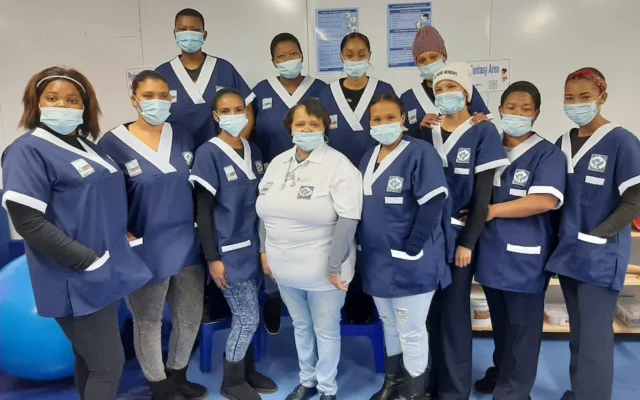Handling venomous snakes ethically is part of the job when constructing a wind farm in South Africa
Category
Communities
Date
12 November 2018
Location
South Africa
Perdekraal East Wind Farm, in the Western Cape, is home to no less than sixteen different species of snakes, four of which are highly venomous. Hence, Environmental Site Officer, Chandré Kok has recently undergone additional training to ensure that she is equipped with the adequate skills to manage the task of safely identifying and removing resident snakes, in line with the industry’s best practices guidelines.
“Cape Cobras and Puff Adders have already been identified on site, however, we know of approximately sixteen different species prevalent in the area of the wind farm and although they vary from being harmless, the endemic Cape Boomslang is highly venomous and not to be trifled with,” said Perderkraal East Wind Farm’s Environmental Site Officer, Chandré Kok.
Chandré, who has a B.Sc degree in Geology and Geography and a B.Sc Honours in Environmental Management feels that she was fortunate to be nominated to attend the training provided by the African Snakebite Institute, where the appropriate handling and removal of snakes from a working area was provided.
“I was elated with the prospect of being the dedicated snake handler on the Wind Farm and know how important it is to be able to correctly identify the type of snakes, to ensure that staff are kept safe. So, as the nominated snake handler, I see the training on how to remove a dangerous snake and the knowledge to identify snakes as critical skills,” she added.
Perderkraal East Wind Farm, in alignment with the wind energy industry’s environmental guidelines works to achieve responsible development. Befittingly, the handling of snakes on site is managed by a catch and release system. There is a snake handling kit available on site, and once caught the snake is contained in a snake tube and thereafter released approximately 5km away, from where it was caught, in a safe environment.
Chandré works closely with the site’s Health and Safety Management to ensure that employees are kept aware and understand the protocols that have been implemented. Initial Awareness Training is provided to all employees working on the site, which includes educating all relevant personnel on the characteristics of the various types of snakes that are prevalent in the area.
“If a snake has been spotted in a particular work area, the HSE Manager is immediately informed, she then notifies me so that I can take responsibility to identify and handle the snake,” commented Chandré.
Once complete, the 110MW Perdekraal Wind Farm, which spans 3 055 hectares, will comprise forty-eight, 115m-high wind turbines. When operating at full capacity, it will generate around 368.8 GWh of clean renewable energy per year and is expected to supply electricity to power up to 95 000 South African homes.
Perdekraal East Wind Farm will eliminate approximately 410 000 tonnes of carbon emissions each year compared to traditional fossil fuel power plants. In addition to zero carbon emissions and reduced use of fossil fuels, the country will benefit from minimal water consumption during the generation process and significant social and enterprise development programmes.
Related News
View all News




